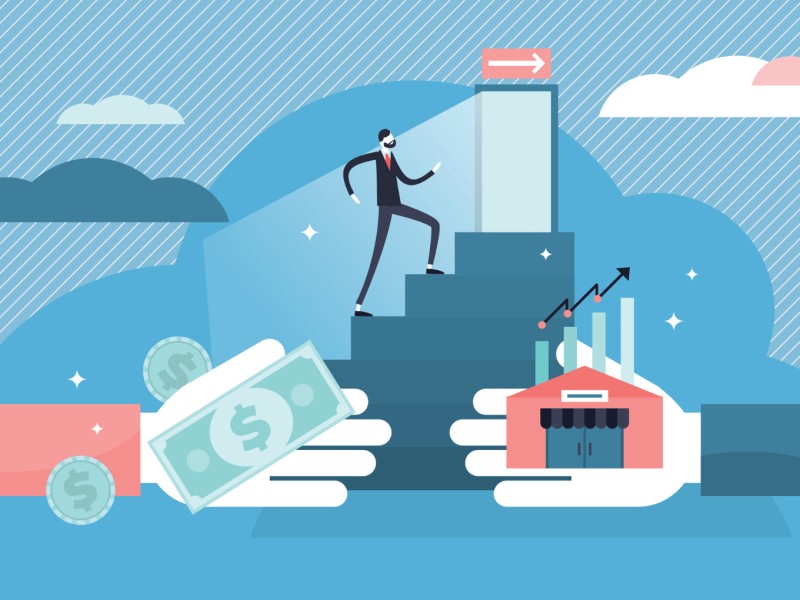In terms of money, media coverage, and Wall Street fanfare, initial public offerings, or IPOs, are huge events. However, what exactly is an IPO? Traditionally, a company sells its shares on the market for the first time at its initial public offering. Comparing those fresh shares to those of well-established public firms, there may be more potential risk—but also opportunity.
Fundamentally, an IPO is a company's way of saying "hello" to investors. It's commonly known as "going public." However, a lot of firms getting ready for an IPO are already well-known, frequently because they are rapidly expanding start-ups. For example, when Facebook parent company Meta (META) went public in 2012, it already had over 900 million members. Not that unfamiliar, actually.
For these stocks, or even for less well-known IPOs, there may be a great deal of buildup before to the actual launch, and this building typically results in media hype. This might cause careless investors to miss certain drawbacks, therefore before making an investment of this kind, everyone thinking about it should learn a few fundamentals about initial public offerings.
Why do businesses go public through initial public offerings?
- Many businesses go public in order to raise money, increase their future access to financial possibilities, or do both.
- The U.S. Securities and Exchange Commission (SEC) lists the following additional reasons:
- boosting stock liquidity, which might make it easier for owners and staff to sell their shares.
- use the company's equity to purchase other companies.
- use the company's shares or stock options as a means of recruiting and rewarding staff.
- gaining recognition, prominence, or notoriety for a business.
American businesses preparing to go public need to submit a registration statement to the SEC. However, it is only the first phase of a drawn-out IPO process.
What is the intention of the IPO procedure?
Regulators and experts in the financial sector scrutinize a company's finances and business strategy throughout the IPO process, which is a crucial screening phase.
Providing underwriting: For the purpose of reviewing its finances and determining a reasonable IPO price, a firm usually hiresa "underwriter," which is normally a large Wall Street bank or group of banks. Long before trading commences, underwriters collaborate with the firm to determine the fundamental terms and arrangement of the offering, including the proportion of shares allocated to institutional investors such as hedge funds, mutual funds, and endowments, in addition to individual investors.
Travel exhibition: In an effort to draw in potential investors, firm management typically embarks on a nationwide "road show" during the lengthy initial public offering (IPO) process, which can last several months. Prior to the IPO, company executives could be given the chance to purchase additional shares. If the price rises after the initial public offering, this might be quite profitable. Travel exhibition: In an effort to draw in potential investors, firm management typically embarks on a nationwide "road show" during the lengthy initial public offering (IPO) process, which can last several months. Prior to the IPO, company executives could be given the chance to purchase additional shares. If the price rises after the initial public offering, this might be quite profitable.
What is the size of the IPO market?

IPO activity frequently rises and falls in tandem with general market mood or economic activity. IPOs are more common in bull markets than in bear ones. Renaissance Capital, an IPO research organization, reports that 397 U.S. IPOs raised $142.4 billion in 2021, the most transactions in a single year since 2000 and an all-time record in terms of money raised.
How successful are IPOs?
Performance can fluctuate since many businesses carry out their initial public offerings (IPOs) before turning a profit. If you wait long enough, many turn become large winners, but many turn into enormous losers.
According to a 2021 Nasdaq analysis, IPO success declined over time, examining offerings from 2010 to 2020. According to the study, 34% of initial public offerings (IPOs) outperformed their corresponding indices by 10% or more three months after going public, while 32% underperformed by the same amount. At that juncture, there was a about 50/50 chance that an IPO would outperform its overall index. After a year, just 34% of IPOs outperformed by 10% or more, while 50% of IPOs underperformed by 10% or more.
After three years, the negative outcomes were much more pronounced. Nearly two-thirds of all IPOs had underperformed at that point, despite the top 10% of performers having significantly outpaced their indices. According to the Nasdaq research, "it appears that for certain companies, investors reprice the IPO to reflect the actual, slower growth of the company when the initial IPO enthusiasm wanes or expected earnings are not met."
In summary
It's imperative that you do your research before investing any of your hard-earned cash in an IPO. Even if many private investors aren't good fits for IPOs, it's still important to keep an eye on the IPO market since it provides insight into market mood and where professional investors see chances and development. Just keep in mind that things might change swiftly from hot to chilly.








